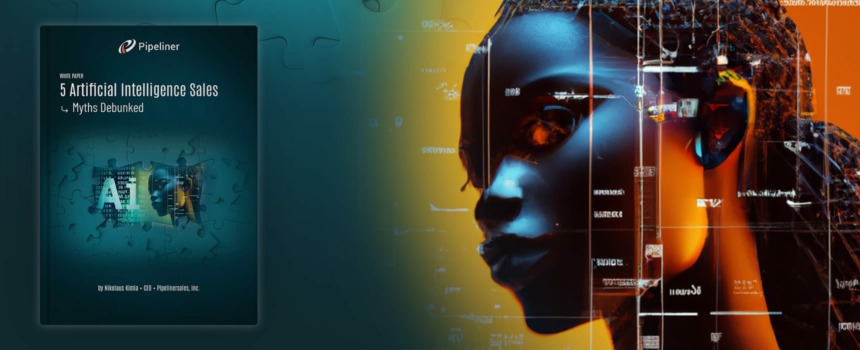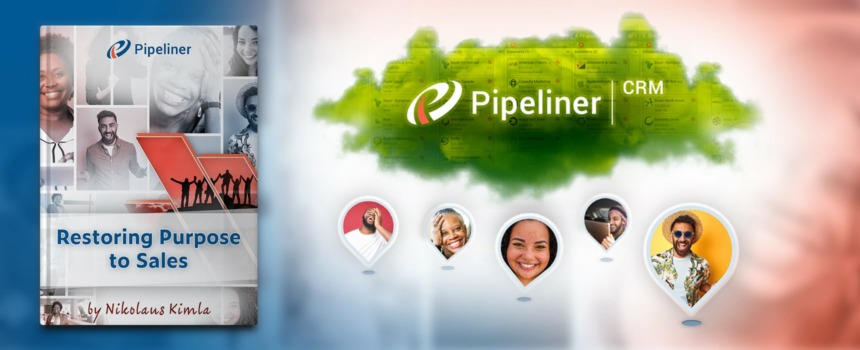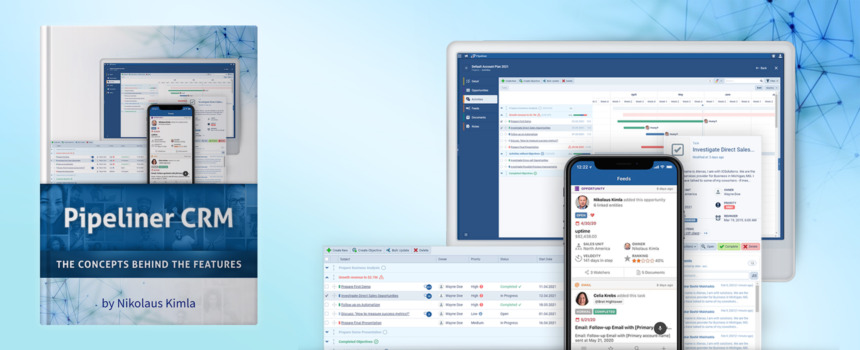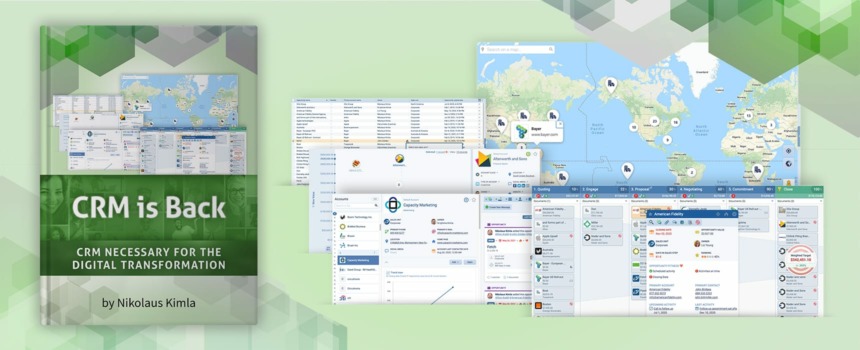This ebook is designed to show you how Pipeliner CRM, with its constantly innovated and evolving new features, assists salespeople, sales managers and other roles in the company as they make their way into the future. As we move forward, it becomes increasingly important how users spend their time, because their time becomes ever more valuable.
It should be noted that our innovation of new and more powerful features is an ongoing and evolving process. There will always be changes and improvements going forward. We believe that data analytics is crucial for future business decisions, and it requires consistently evolved angles from which to view the data.
Pipeliner is like no other CRM tool in the world. At the center of it is the Automatizer functionality, which makes it possible to automate not only routine tasks, but even some functionality in other applications. This doesn’t mean that everything should be automated, though—there is so much more a company can do today.
A salesperson’s job is broken down into specific tasks which, within Pipeliner, we refer to as activities. An activity could be a call, a visit, a reception of feedback, or an email. With the Automatizer, some activities can be automated. Activity metrics are important, but there is a slight difference between measuring activities conducted by the salesperson and those that are automated.
Effectiveness and Efficiency
To fully grasp the importance of a tool like Pipeliner, you must understand the difference between effectiveness and efficiency. Far too often these two terms are simply interchanged and thrown around like buzzwords, and are used incorrectly. When “experts” say that sales metrics have to be “both efficient and effective,” it’s obvious that the speaker considers the two terms mean the same thing. This isn’t the case.
Peter Drucker, the great Austrian management consultant, educator and author, stated this difference very precisely: “Efficiency is doing things right; effectiveness is doing the right things.”
When it comes to sales, I’ve always used the analogy of a hammer and a nail. If you are hanging a picture on a wall, you need a hammer. While something like a brick might do the job, it won’t work very well. And you not only need a hammer, but the right kind of hammer. A sledgehammer will drive the nail right through the wall, and will probably put a big hole in the wall. You need a smaller hammer that you can use to put the slender nail in place on which you’ll be able to hang the picture.
Another analogy would be using a bicycle to go from Los Angeles to San Diego (a distance of 120 miles). You’d have to plan roughly 12 hours for the trip, and because you’d arrive there sweaty and tired, you’d need to rest, shower, and have a change of clothes ready. Obviously, a bicycle would not be an effective mode of transport in this circumstance.
If you don’t have the right tool, you can never be effective.
In Sales
Once again, effectiveness is doing the right thing. To do the right thing, you need the right tool. If a salesperson is not using a tool that has meaning for them as a salesperson, or if they absolutely dislike the tool, they’re not engaged with it. It doesn’t mean anything. It doesn’t sync with their mindset, and doesn’t speak their language as a salesperson.
We have to take into account the fact that salespeople are visual people, driven by different approaches. Because Pipeliner is completely visual, it is the only truly effective tool for sales. The primary principle for Pipeliner development is Instant Dynamic Visualization. Any tool that isn’t so formulated will never be effective.
Now moving onto efficiency, it is only with the right tool that a salesperson can become efficient. As an example, a salesperson should be very efficient in calling people. But if they don’t have a tool that enables them to make multiple calls—such as today’s dialers and call robots—they won’t at all be efficient in cold-calling. If their company tells this salesperson that they have no calling software, that they must use their own smartphone, they’re going to have a great deal of trouble making a quota of 100 calls a day. They might somehow be able to achieve this for a couple of days, but by day 3 they’ll be so exhausted and frustrated they’ll probably throw the smartphone out the window and quit.
Salespeople—just like everyone else—only have so many hours in a day. They only have certain times of day they can reach prospects. They can work outside of these hours, but it is only those hours they’ll be able to connect to prospects. It is therefore critical that a salesperson be very efficient in their activities. Otherwise they won’t get everything done, and make quotas, the way they need to.
Automating Tasks
While a salesperson needs to constantly improve in the things they do, they don’t need to improve in repetitive tasks. Such tasks should instead be automated, offloaded to Pipeliner’s Automatizer, or a workflow engine.
Outside of sales, history has shown us many such innovations, for which we’re eternally grateful. We all used to have to manually wash dishes after every meal—an extremely repetitive and mundane task. Today we just load up the dishwasher and press a button. Similarly, we once had to wash clothes by hand, and dry them on a line outside, at least when the weather was good. Today we have efficient washers and dryers to take care of those tasks for us.
Interconnection
Today these kinds of appliances are becoming even more efficient by being smart, able to share knowledge with each other. This is the Internet of Things (IoT).
In a similar way, the tools we use in sales must interconnect, too, and we must be able to connect with them. When we examine data, it must be made meaningful to us—not just to show us discrepancies, failures, or shortcomings, but mainly to improve the process. That is actually the goal of data—to remove problems, reduce risk, and to leverage opportunities. When we can rapidly and fully understand indicators and metrics, and deeply view actual issues, we can be proactive instead of reactive. At that point business gets interesting, because at that moment we are faster than our competitors.
Data within the sales process has different meanings for different roles in sales. A sales development rep (SDR) would interpret things differently than a sales hunter or farmer. The way data is interpreted brings real efficiency.
Efficiency Brings Productivity
What, in turn, does efficiency provide to a company? Efficiency leads to productivity. When we’re more efficient, we become more productive as a natural result.
Improved productivity means that you are getting better at all your activities, getting more out of the system, reducing costs and levering opportunities. Of course that’s a major goal for any company, now and into the future: reduction of risk, reduction of costs, and optimizing profit.
Part of becoming more productive and more efficient is coordination and working together. For example, when a salesperson works well with an SDR, their sales productivity increases exponentially. The time frame for accomplishing activities is reduced. This all means more wins for sales.
Come with me now and see how Pipeliner can bring ever-increased effectiveness, and therefore efficiency—and therefore profitability—to your organization.








